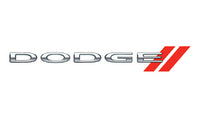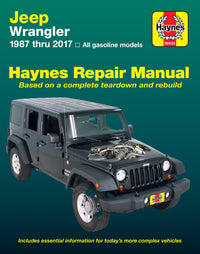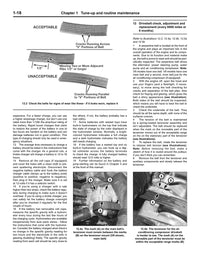The shocks and struts in your car are what gives it that comfortable ride, and what stops it wallowing all over the highway.
They contain a damper (or shock absorber) and a spring, and reduce the vertical motion of the wheels, to keep them in solid contact with the road. Without them the car would just be a uncontrolled bouncy mess, pogoing over every bump and diving at the slightest use of the brakes.
Worn shocks increase stopping distances, negatively affect cornering, accelerate tire wear, and make the car less safe, on top of less being less comfortable.
But how do you know when you need to replace shocks and struts? And when that time comes around, how do you go about it? Don't worry, Haynes has your back.
Where are your shock absorbers?
Every car is different, but generally there is one at each corner, by the wheel. Up front, the most common style of suspension is the MacPherson strut, which holds the steering knuckle in place and typically has the spring mounted to it as well. This is a great design which saves a great deal of space and delivers predicable handling. Of course, other cars differ, so do check your Haynes manual.
Older cars, trucks, vans and many rear-wheel-drive vehicles use a separate shock that has no structural function. Many of these are still "coil over" shocks though, with the spring mounted to the shock instead of the control arm.
As for the rear, struts are sometimes used, but ordinary shocks are more common, with or without springs mounted on them. On many cars you'll find you need to remove the rear seat to get to the upper mount, or take off some interior trim.
When should you change your shock absorbers?
There is no hard and fast rule on how long your shocks and struts should last, but Haynes recommends you inspect them about every 6,000 miles or with each tire rotation. Most manufacturers expect shocks and struts to be good for at least 50,000 miles of service in normal driving.
The biggest factors in how long shocks last is how and where you drive. If you drive you car or truck hard you will wear them out or damage them quicker. Some causes of wear are: not slowing for speed bumps, slaloming in and out of traffic, slamming on the brakes frequently, or enthusiastically driving tight twisty roads. If you drive off-road, on streets full of potholes, or take your car to track days, these things will also accelerate wear.

How do you know when shocks are bad?
Remember when your dad was shopping for a used car, and he’d lean over one corner of the vehicle and bounce it? That was him checking the shocks. It’s the simplest way. Push the car down and it should rise back up slightly slower than it went down. If it bounces right back like a rubber ball, the shock has no damping left.
The other way to check if shocks and struts are on their way out is to get under the car, or take off a wheel, and have a look. Shocks are sealed units, or at least they are when they are in proper working order, so if you look underneath and there is oil on the shock body, or even worse, an obvious leak, your shocks are ripe for replacement.
Then, there is the way the car drives. Even the most softly suspended of luxury cars with a marshmallow soft ride should damp down bumps and dips. If you drive over a large bump and the car continues to bob down the road like a boat on a rough sea, the shocks are gone.
Other signs of tired shocks are rolling excessively in corners, locking up one wheel when you apply the brakes, spinning one wheel under mild acceleration, or increased dive under braking. If just one shock is bad you will notice turns in one direction feel different from the other. But remember, shocks should always be replaced in pairs, both front or both rear at the same time.
You'll also want to look at the tires. A worn out shock absorber or strut with no damping left will cause a tire to wear unevenly as it bounces up and down as you drive. Look for "cupping", a series of rounded indentations spaced regularly around the tire, the telltale wear pattern of blown shocks.
What tools do I need to change my shocks?
Happily, you shouldn’t need any special tools to change your shocks. To change your struts, unless you get the complete assembly with the spring and mount (called a "quick-strut" or "loaded strut"), you will need a spring compressor.
A compressed car spring really has the potential to kill you, so you have to take real care and use the proper tools. If you'r ein any doubt, get a professional to remove the spring. The majority of the labor cost is in removing and replacing the assembly, and most shops won't charge much to swap over the springs for you. If you insist on doing it yourself, don't skimp on the spring compressor, rent the professional grade one from your local auto parts store.
The top of the strut is usually held in place with a few small bolts, or sometimes just a clip. At the bottom though, there are typically several large bolts, tightened to considerable torque and affecting the front end alignment. Your Haynes manual will explain how to mark them and how tight they have to be when it all goes back together.
Unless your car or truck uses coilover shocks, replacing them is easier than struts. Often times you can unbolt them and drop them down without touching the springs at all. Then just slide the new one in and tighten it all up again.


























